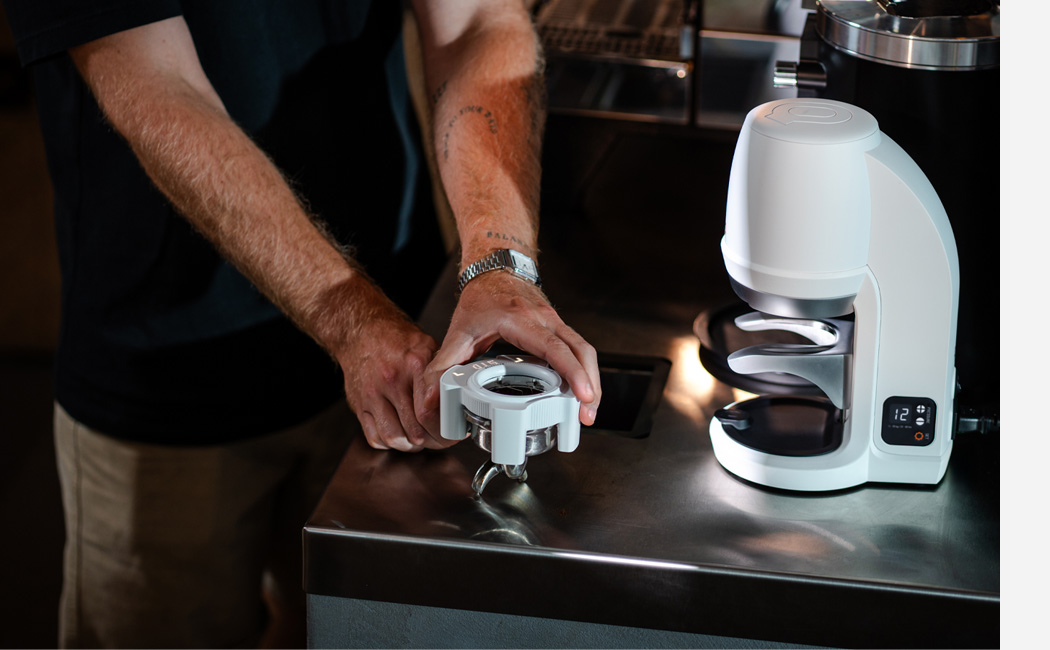Distributors for espresso coffee. Technique and differences between them

Distributing the coffee grounds evenly in the portafilter basket is a technique increasingly used by baristas and espresso enthusiasts, as it helps improve the flavor extraction in your espresso shots.
But what exactly does a coffee distributor do?
Coffee distributors spread the grounds evenly across the entire portafilter basket before tamping and extraction. This helps improve flavor and prevent channeling during brewing.
There are several types of coffee distributors: manual, assisted manual, and automatic.

Recently, the use of WDT tools (Weiss Distribution Technique) has also become widespread. These tools use fine needles that move in circular or zigzag motions to efficiently distribute the coffee grounds across the entire diameter of the basket.
Perfect examples of this include the WDT distributor by Studio Barista and the Cyclone Needle Distributor by MHW-3Bomber.
What’s the difference between manual and automatic distributors?
The main difference lies in the level of effort and human intervention required.
Let’s go through each type and their advantages.
Manual Coffee Distributors
Characteristics:
The barista manually rotates the tool to achieve even distribution. The entire process relies on human control, meaning it requires skill and consistency.
Advantages:
-
Greater control over the distribution process — you decide how fast and how much to rotate the tool.
-
Typically more affordable than automatic or assisted models.
-
Easier to clean, store, and maintain. They usually have a compact design and simple mechanisms.
Examples:
Studio Barista 58mm Adjustable Distributor, NCD Distributor by Nucleus.
Assisted Manual Coffee Distributors

Characteristics:
These tools often include mechanisms that make them more automated than purely manual distributors, though they don’t run on electricity or motors.
Advantages:
-
Require less effort than manual distributors and provide consistent results more easily and quickly.
-
Offer moderate control, as barista involvement is still needed.
Examples:
NCD Pulse by Nucleus, Autocomb by Barista Hustle.
Automatic Coffee Distributors

These tools include a motor or electricity-powered mechanism and operate with the press of a button or slight pressure. They are typically larger and may also include tamping functionality.
Advantages:
- Quick and easy distribution with minimal human involvement.
- Provides a consistent, even distribution without requiring much technique.
- Reduces fatigue and risk of repetitive strain injuries.
- Ideal for coffee shops or businesses with high volume, as they can handle many cycles without downtime.
Example:
Navigator by Puqpress.
Conclusion: No matter which type you choose, coffee distribution is a key step that will help you enjoy better flavor in every cup of espresso.







